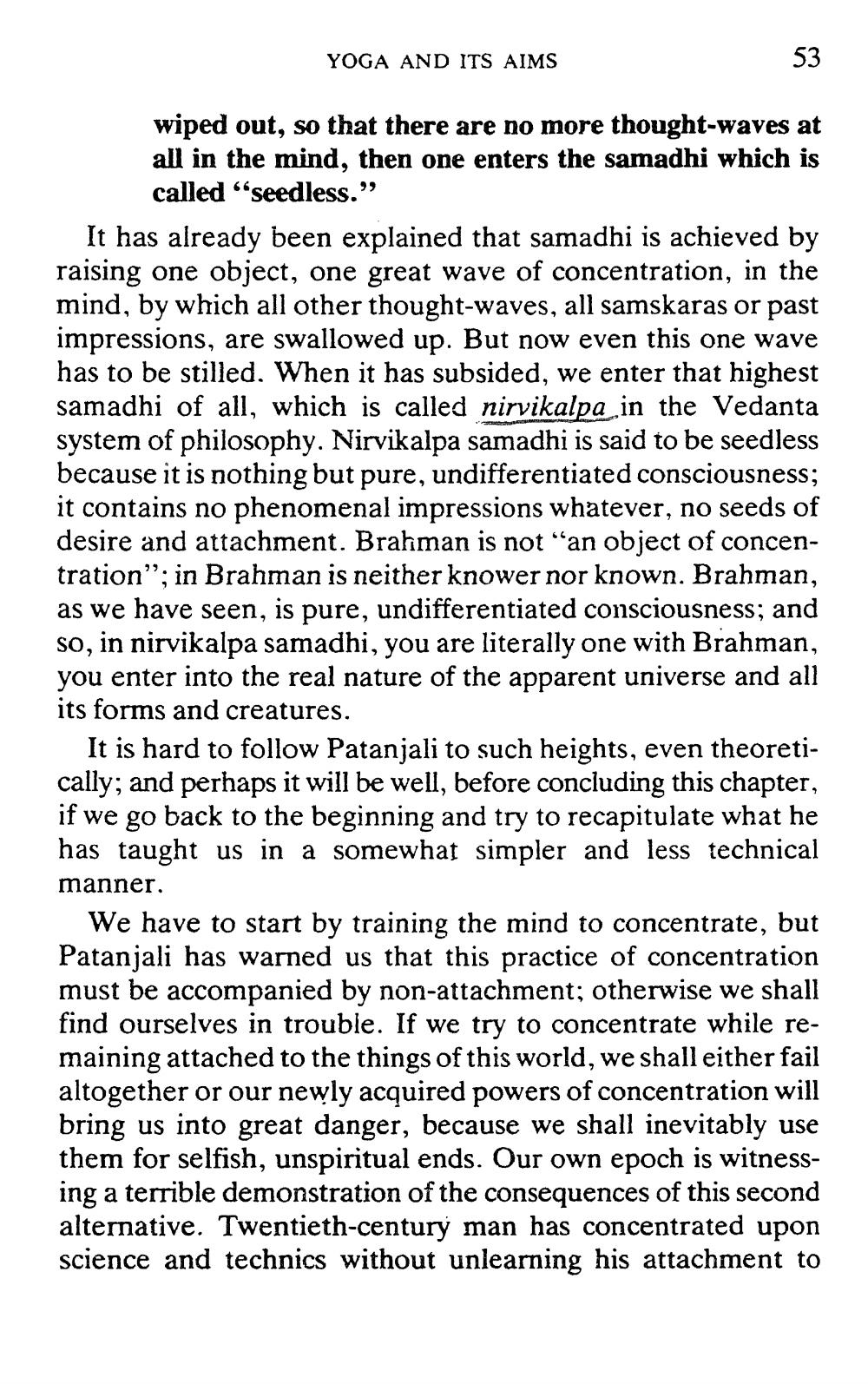________________
YOGA AND ITS AIMS
wiped out, so that there are no more thought-waves at all in the mind, then one enters the samadhi which is
called "seedless." It has already been explained that samadhi is achieved by raising one object, one great wave of concentration, in the mind, by which all other thought-waves, all samskaras or past impressions, are swallowed up. But now even this one wave has to be stilled. When it has subsided, we enter that highest samadhi of all, which is called nirvikalpa in the Vedanta system of philosophy. Nirvikalpa samadhi is said to be seedless because it is nothing but pure, undifferentiated consciousness; it contains no phenomenal impressions whatever, no seeds of desire and attachment. Brahman is not an object of concentration”; in Brahman is neither knower nor known. Brahman, as we have seen, is pure, undifferentiated consciousness; and so, in nirvikalpa samadhi, you are literally one with Brahman, you enter into the real nature of the apparent universe and all its forms and creatures.
It is hard to follow Patanjali to such heights, even theoretically; and perhaps it will be well, before concluding this chapter, if we go back to the beginning and try to recapitulate what he has taught us in a somewhat simpler and less technical manner.
We have to start by training the mind to concentrate, but Patanjali has warned us that this practice of concentration must be accompanied by non-attachment; otherwise we shall find ourselves in trouble. If we try to concentrate while remaining attached to the things of this world, we shall either fail altogether or our newly acquired powers of concentration will bring us into great danger, because we shall inevitably use them for selfish, unspiritual ends. Our own epoch is witnessing a terrible demonstration of the consequences of this second alternative. Twentieth-century man has concentrated upon science and technics without unlearning his attachment to




